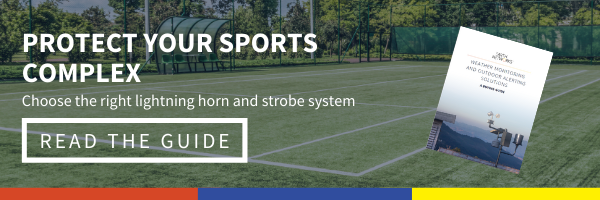8 Things to Consider When Building a New Sports Complex
- Feb 22, 2019
Building a New Sports Complex

So you’re building a new sports complex – Good for you! Whether this process is new to your or you’re working on your tenth sports complex it’s still impressive.
Owning and maintaining a space for people to enjoy recreational activities is good for your community’s health, wellness, and wallet.
However, this is a complicated process. There are a lot of different factors that go into making a state-of-the-art sports complex. Here are the top eight things you should consider before you build to ensure you have the best sport complex plan.
1. Activities

The first thing on our list is activities. When building a new sports complex, you need to ask yourself what activities you want to host. This includes asking questions about what sports you need areas for and what age groups you plan to serve.
Remember, an elementary school soccer league will have different safety and skill-based needs than a traveling high school age club team.
Establishing exact activities you plan to host, season-by-season will help your design team build the right sports complex.
2. Contractor Selection

The next big consideration on our list is contractor selection. There are a lot of different contractors out there that exist on a wide spectrum of quality.
Trust us: You definitely want to go with a company that has built sports fields before.
Building a few complexes isn’t enough to make them your go-to contractor, though. You should do the following three things before you decide on a contractor:
- Visit their websites
- See past projects
- Ask for testimonials
You can have the most innovative, amazing vision for your complex in your mind. However, if you hire the wrong contractor the finished product won’t come close to your dreams. These actions will make sure you cover all of your bases, so you can narrow it down and pick the right contractor.
We recommend doing research when choosing a weather safety service provider for your sports complex, too.
3. Building Regulations

Depending on where your land is, your town or state will have different building regulations. It’s imperative to understand them and ensure your plan is in accordance with them before you dig the first hole.
You must present your plans to your local municipality for approval. Typically, you’ll have to specifically meet with their zoning department. Only after these plans are approved can you move forward so get this done early in the process!
4. Turf Selection

Turf is one of the most important aspects of any sports complex. Think about it: This is where your customers and visitors will spend the most time.
But how do you choose the right turf? Should you go with natural grass or artificial turf?
The two have their pros and cons. One important thing to remember is that turf grass gets a lot warmer a lot quicker than its natural counterpart. That’s important to know for hot weather safety precautions.
If you go with natural grass, you need to think about:
- Sod vs. sprigs vs. seed
- Planting rate
- Planting dates
- Fertilizer
- Herbicide applications
- Tillage
- Rolling
5. Irrigation & Draining

Two things that are important no matter what type of field you create are irrigation and draining. While you need not irrigate synthetic turf fields, you still need to worry about draining. Make sure you do your due diligence and understand if your fields are in a flood plain.
For natural turf fields, irrigation is a big focus point. If the water content of your fields drops below 60%, the turf becomes weaker and can die.
Supplemental water is necessary when natural rainfall is not sufficient to keep the turf healthy after the soils have dried out. Weather conditions like temperature, sunlight, wind, humidity, and natural rainfall all impact the amount of water needed for your field. These are conditions you can easily access from your own weather station.
If you’re building a sports complex in a climate you’re not familiar with, you can use historical weather data and/or a meteorologist to decide if you’ll need supplemental water.

When it comes to irrigation, you can choose between portable systems or in-ground systems. Your choice will probably depend on the historical weather data for your area, your budget, and the layout of your sports complex.
6. Severe Weather Safety

The next big issue you have to take into consideration is severe weather safety. Depending on your location, there are a lot of different weather threats that can damage complexes, injure players and guests, and even kill.
Lightning is one of the most common and dangerous severe weather conditions that put sports complex operations at risk. When building your facility, the best weather safety practice is installing a trusted lightning detection system.
A lightning horn is a great solution to any lightning problem. Systems that include horns, countdown clocks, and data from total lightning are the most reliable solutions on the market today.
If you’d like to learn more about what lightning detection options are out there, download our buying guide below. You’ll be a lightning safety expert in no time!
7. Lighting

The next thing you need to consider when building a new sports complex is lighting. Even if you don’t plan to host night games, you need lighting for security purposes.
When most people are building a new sports complex, they do plan to host night games. This is just another way to make more money out of your investment. Therefore, lights are a big deal.
The best practice today is to use LED lighting. We know that utilities present a significant expense to a sports complex’s day-to-day operations. If you decide to use LED lightning in your sport complex design, you can drastically reduce your monthly electric bill.
Not to mention, LED bulbs last longer than traditional ones. These are especially important for indoor sports facilities because they do not generate as much heat as traditional light bulbs. Therefore, you’ll cut cooling costs and keep your athletes safer from overheating.
8. Parking

The last item on our list is something a lot of folks don’t think about when they first design a sports complex. However, parking is one of the most important things you have to consider.
Why? If you want to compete with other facilities for hosting lucrative tournaments, you need to meet minimum parking per event criteria. Organizers hosting events typically need anywhere from 50 to 100 spaces per field. They also worry about how far their visitors have to walk from parking to the fields.
Another factor you have to consider with parking is liability if a ball or other piece of equipment damages a vehicle. Nets are a good idea for parking spaces next to baseball fields especially, but it’s important to have signs that clearly state you are not responsible for any damage or injury caused by game play.
Just the Surface
To be quite honest with you, this list only scratches the very surface of building a new sports complex. Like we said before, there are a ton of things that you must consider when embarking on a project like this one.
What other things do you consider when starting on a new project like this one? Let us know in the comments below or tell us on Twitter.
#SportsComplexTips Share on X





